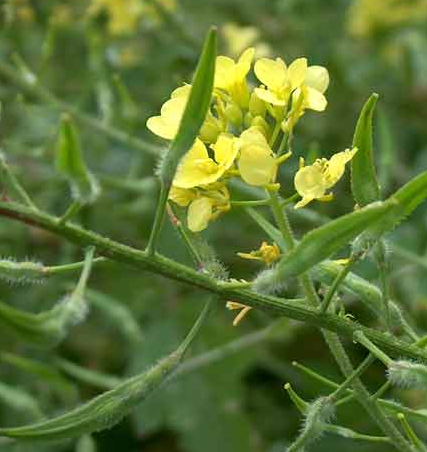-
Posts
11,033 -
Joined
-
Last visited
Content Type
Profiles
Forums
Store
Help Articles
Everything posted by andiesenji
-
I concur on the phyllo dough but I cut into squares or circles and use mini muffin tins upside-down and drape the dough OVER the molds as they keep their shape better without collapsing down into the cups. I have also used pizza dough, stretched as thin as possible - allowing it to "relax" before doing the stretching and cutting to size. For deeper cups I use my popover pan.
-

Yard Sale, Thrift Store, Junk Heap Shopping (Part 2)
andiesenji replied to a topic in Kitchen Consumer
Nice haul. I love your description of the place. I have both bread books and have used them for many years. -
Hi Nick, and welcome to the forums. Please give us a bit more info. Background, including education and experience, family stories (we love family anecdotes), where you have lived and don't forget to share photos. (To share photos you need to click on the "More Reply Options" at the lower right corner of the message pane.) Will you share recipes? Many of us "collect" recipes - (there was a thread about Scottish nibbles a few months ago) - I've been collecting recipes or "receipts" since my teens (in the 1950s) and some came down in my family and have been modernized and are on my blog. In the early '70s my dad spent several months traveling in England, Wales, Scotland, Orkney - and brought back a number of recipes gathered from distant family members (Orkney), inns, pubs and individuals. One was Orkney barley bannock, which I have played with several times (could still use improving). When my daughter lived in Inverness for six months several years ago she also collected recipes, concentrating on breads as started out as a professional baker and was my main focus of interest.
-
The "average" American voter is ill informed, does not pay attention to most scientific articles and responds to a few emotional catchphrases that are INTENDED to incite irrational response. The media has been manipulated for decades, this is nothing new and should not surprise anyone who PAYS ATTENTION. Remember the furor decades ago when a hoax newspaper article purported to have discovered the release of "dihydrogen monoxide" into the water delivery systems of several cities and listed the possible effects on humans and animals? I think it was an April Fool joke and was published when I still lived in the San Fernando Valley (well before internet access). People took it seriously and phones at various municipality offices were overloaded with people demaning answers. It was subsequently used in multiple theses of graduate students studying the behavior of gullible, scientifically ignorant citizens.
-
I don't have anything recent but this company has been cited in the past and imports seized by the FDA for failure to list the actual ingredients in products intended for human consumption. My Mexican neighbor said that she would not buy any product from this company for various reasons, including phony ingredients and also because the company has bad employment practices - although she would not elaborate. Here is a notice from 2009 scroll down to the Mexico listings.
-
When I got my tankless water heater I still had a commercial dishwasher (Hobart undercounter model) - 90 second cycle. Sounded like a 747 taking off but as the sound was over quickly, it never bothered me. After I had a fracture in my spine, I had difficult shoving the removable trays in and lifting them out when they were loaded, especially with crockery. So my friend, who owns a bakery cafe and wanted an efficient "sanitizing" dishwasher for the cafe, took the Hobart and paid for a new Bosch for me. After having the commercial unit for so many years, it was often frustrating that the cycle took so long. It is an "energy saver" unit and is supposed to save water too.
-
For my kitchen and for my entire house, I intalled tankless water heaters (had them installed). Either gas or electric tank-type water heaters WASTE a lot of energy by reheating the same water over and over and if you need to do several loads of wash or take long showers or have multiple folks showering, you RUN OUT OF HOT WATER. My gas consumption has been HALF what it was when I had the tank-type water heaters and I don't have to worry about the tanks "silting up" which happens rapidly here where the water contains a lot of dissolved minerals that precipitate out with heat. The last tank-type water heater that was removed when the tankless was installed, took two men to lift it - only one needed when it was installed 4 years before. The effective life of tank-type water heaters here is 4-5 years before they become so full of silt that they don't heat the water efficiently and there is less water for use.
-
I finally found the recipe I used to use for GF tortillas with great success. The link is here It has a lot of ingredients but it works much, much better than any of the commercial GF flour mixes. The reason I made the injera recipe was because I couldn't find this one and I still can't find my text document but this was still in my bookmarks in my "recipe success!" folder. I made it several times - I made the dough a day before I was going to cook them and stored it in the fridge in a Cambro container. I do recall that I needed to use additional water - not unusual here when the humidity is very low (sometimes in single digits). I always have the "Pixie dust" on hand - in a pint jar in the fridge - to add to hot cereals, muffins, pancakes, waffles and yeast breads. The link is in the list of ingredients. I originally ordered psyllum powder from Vitacost - now buy from Amazon - several years ago when I had a bit of a dietary problem. I note that America's Test Kitchen also includes it in their baking formula.
-
The GF "substitute" for flour tortillas that worked for me (although the prep was a bit time consuming) was a recipe for injera that I made with half teff flour and half millet flour (didn't have enough of the teff flour). I used THIS recipe for "one day injera" and it didn't have the sour flavor of "real" injera but was a heck of a lot easier to make. The stuff did not become hard or tough and worked great with fillings (carnitas pork and steak adobo) and also with just cheese and chiles. There are other flours that should work as well combined with the teff, such as amaranth, quinoa. I've got both and some brown rice flour that I have used to make rice paper wraps.
-
I think the recipe was for "gluten free bread that doesn't suck" but my search parameters must be skewed because I can't find it.
-
On one of the blogs I follow the author "ground" instant potato flakes in the food processor till it was like fine cornmeal and then incorporated it in a GF recipe. I've been trying to find the particular recipe but have yet been successful.
-
Yes. The young leaves can be eaten raw in a salad or when they are a lttle bigger, cooked as "greens" although this type of mustard plant is not the kind usually grown for mustard greens as it produces a flowering stalk, on which the seed pods develop, earlier than the "slow-bolting" mustards, such as the "Southern Giant Curled" variety that produces large leaves and is grown primarly for them. Another is the "Florida Giant" and the Japanese "Tatsoi" and Tokyo Bekana, which are a bit milder and have stems that are not as tough and are often chopped and cooked in soups. "Giant Red" is another leafy variety that has a very strong flavor and "bite" that some people find too strong. Wild mustard can also be harvested when very young as the basal leaves are quite tender and mild BEFORE the stalk appears. I grew mostly brassica juncea - brown mustard, brassica sinapis alba(aka hirta) - white or yellow mustard - but also had some plants that were brassica nigra or black mustard, which is stronger and more pungent than the other varieties, to "balance" the end product. Here the stuff grows like a weed, very rapid growth, especially the black variety when the temp is hot. The other varieties do better in the spring and fall when the temps are cooler but as we usually have cool nights, they handle the daytime heat quite well.
-
I rinsed and removed the pulp from three whole preserved lemons, cut them into "matchsticks" and added them half-way through the cooking of 3 pounds of caramelized onions (onion confit) and the results were outstanding. Note: I started out with 3 pounds of large brown onions, skinned them, removed both ends and sliced them pole to pole instead of crosswise as I have found through long experience that I like the end result better using this method.
-
My "mustard patch" was 4' x 10' and produced plenty of seeds for me to use and for reseeding the following spring (early) and I could harvest one crop in June/July and other in October. (Lancaster, CA - high desert, long growing season).
-
This is what the young leaves look like - at this point I thin the plants and use the leaves of the "discarded" plants in salads. This is what they look like when the stalks are producing flowers with a few very immature pods that look like fat green pine needles at this point. This is a closeup of a stem with immature pods that are beginning to fill out. I can't find a photo of the mature pods that are turning brown and drying, but when they begin to crack easily when pinched is the time to harvest.
-
Following is a link to the page on my blog where I go into more detail about how I make mustard. This does have a sweet base but in my experience, it is much easier to temper the base sweetness to make it less so than it is to add sweet later. MUSTARD – Home made, Easier than you might believe
-
For an entire year, America's Test Kitchen spent many months testing and perfecting gluten-free baking and began airing the segments locally last fall, although in different areas they were broadcast earlier last year. Here's one link to some recipes that work. And this is the flour blend they developed - no xanthan gum, which they add only when using the GF flour in certain recipes. Last week, the segment for gluten-free pizza dough was re-aired locally and looks like a winner. I immediately did a search for the online recipe and have it printed out, ready to try. I have tried other GF pizza doughs - none have been satisfactory, most were totally inedible. And this link is to some IMPORTANT HINTS on how to handle and bake GF items. P.S. They did state that the only TWO commercial GF flour blends they found acceptable were King Arthur's and Bob's Red Mill.
-
The food network lost me when they cut all the really good programs and converted to the hip and "forward looking" idiots that are more interested in their own celebrity than in producing a show that actually teaches folks that are eager to learn how to cook. I remember when John Ash, David Rosengarten, Curtis Aikens, Sara Moulton, Susan Feniger and Mary Sue Miliken, Wolfgang Puck were the backbone of the channel, backed up by various chefs on Baker's Dozen, Calling All Cooks and Chef du Jour.
- 77 replies
-
- 10
-

-
Congratulations!
-
I've had Excalibur dehydrators since the '80s. I've used them extensively for fruits, veg, jerky, as a proofing box for yeast breads, etc. They last about 18-20 years so if you pro-rate the cost, they are cheaper than the less expensive models that have to be replaced every 5 years or so.
-
I've long been a fan of King Arthur bread flour and I use it on a regular basis. A bit over a year ago a friend brought me a bag of Rogers flour from Canada - 13% protein - which performed beautifully for artisan breads - I usually do boules instead of baguettes because they suit my needs better. Last spring I ordered some "Ultimate Performer" unbleached organic flour from Giusto's - (13 to 14.5% protein) I used it in some breads that are usually very dense and heavy - loaded with seeds and nuts, sprouted grains, legumes, dried fruits, etc., and the results were beyond my expectations - a lighter, move open crumb but with all of the flavors I wanted. I got a 30# bag and when I became ill, it was obvious I wasn't going to use it all (before it staled) so I gave the bulk of it to a friend who owns a bakery/cafe and he was very enthusiastic about it for the "German hard rolls" he bakes specially for a long-time customer. Those rolls require a "strong" flour to achieve the thin but hard crust and open crumb. I don't recall if I used it to make French bread, mainly because that wasn't on my agenda at the time as I was concentratiing on getting a lighter result in those heavy breads. (Ezekiel bread was one. Limpa rye was another and was exceptional.)
-
As recommended by others, do get an accurate scale if you don't have one. For the past few years I have directed novice bakers to this site for learing how to successfully bake French bread. The pictorial tutorial is very helpful. This illustrates the handling, shaping and slashing of the shorter batard but once formed you can stretch it out for the longer baguette - just shorten the baking time by about 5 minutes. Flour, salt, yeast and water.
-
I agree with Lisa. My French bread, whether baguettes, boules or batards are made with bread flour or "strong" flour, high protein, high gluten and have lots of holes, varying from small to large and a very crisp crust. To me a dense crumb is a sign of not enough yeast activity and is disappointing.
-
My "omelet pan" is slightly shallower than most skillets and has gently sloping sides. I have deeper skillets with sloping sides that range from quite flared to near to straight, with only a slight flare (cast iron, for instance) and which are used for frying chicken, pork chops, etc., because there is also room for stirring gravy without it slopping over the sides. Some of my frying pans have sloping sides but instead of an outward flare are slightly rounded inward at the top and I find this shape particularly handy for sauteeing stutt that need to be "tossed" to cook evenly. I am sure that my "ideal" pans would be different than the ideals of other cooks because the way we hold pans is different, the strength in our hands and the lengths of our arms is different and what works perfectly for me would not work for others. I have a friend who was a "short order" cook for decades and who prefers his beat-up old Vollrath aluminum fry pans to a newer set his grandchildren gave him. I think they are all 12" pans and for me, awkward to manipulate but he can cook anything in them and they have developed a non-stick patina from years of use.
-
I'm still using the same oils I was a year ago, when I posted - rice bran oil, grapeseed and sunflower seed oil - the latter both "raw" and "refined" which I find excellent for high-temp frying. Also EVOO, regular olive oil, butter, lard, bacon drippings, duck fat, etc. I absolutely, positively will not use palm oil. I did use it for some things (Indonesian recipes) in the past but that was before the massive deforestation in critically endangered areas. For flavoring, I have been using culinary Argan oil on numerous dishes, particularly grains, pastas, tapas - toast-based appetizers such as bruschetta, etc., because of the unique flavor which, in my opinion, enhances and compliments the flavors of these foods (definitely Umami)! It is expensive, but should be used sparingly. For an afternoon snack with a cup of tea, I drizzle a bit on warm flatbread - naan or pita. Some people say it basically tastes like mildly toasted sesame oil but not to me - I like toasted sesame oil and use it in some dishes but it has a faint bitterness that is absent in the Argan oil. A friend sent me a "set" of "exotic" nut/seed oils for my birthday in March (I was away at the time so they were at my neighbor's till I got home) and I opened the Macadamia oil yesterday and made a small batch of mayo - the recipe was on a hang-tag on the bottle. It was excellent in chicken salad. There is also hemp oil, pistachio oil and Sacha Inchi Oil and the latter is one I have never heard of. Apparently it is one of the new "superfood" items from the Andes. Available from Amazon. I have yet to try these three but the latter intrigues me as it is apparently a "flavoring" or "finishing" oil and may be similar to my favorite Argan oil.




